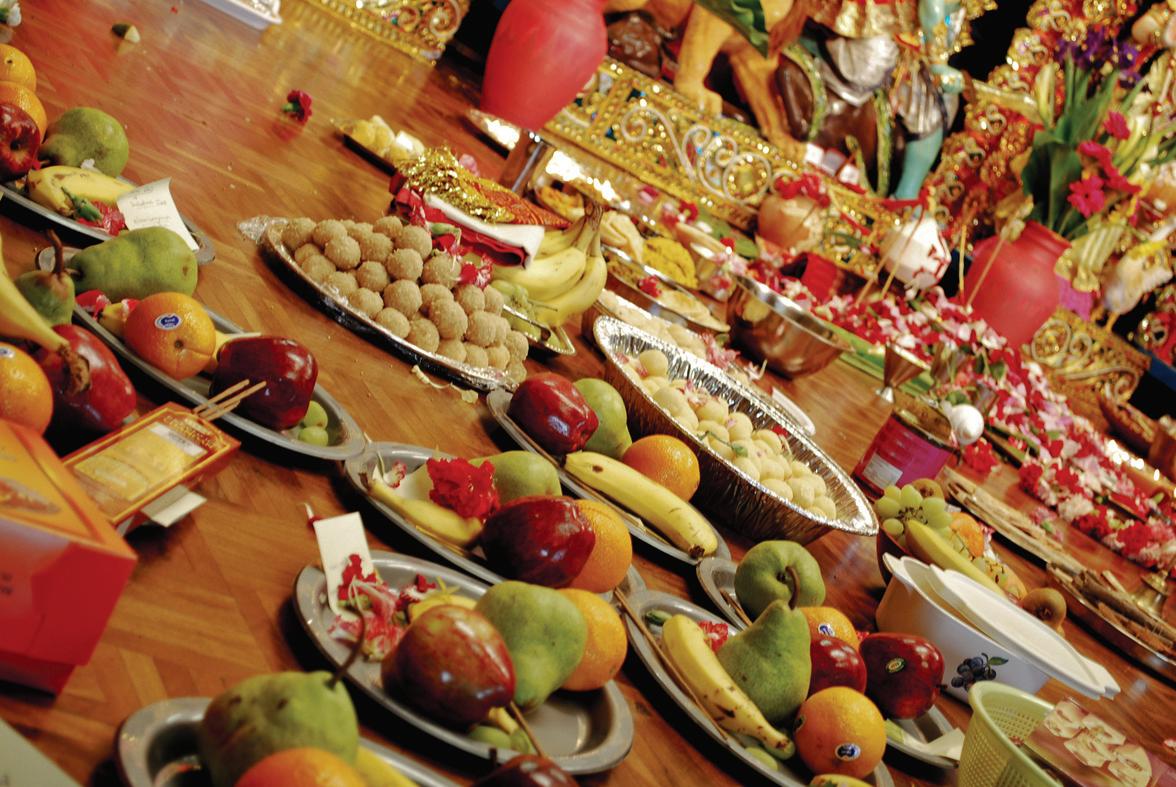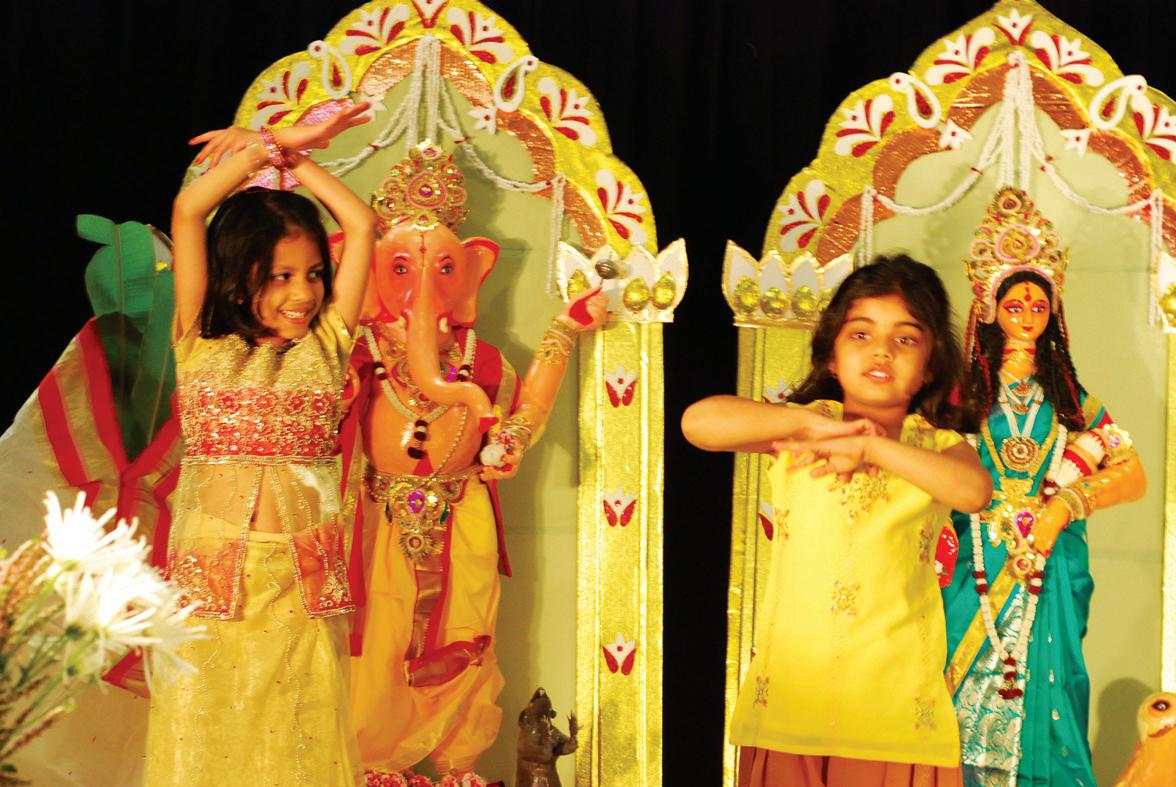
1 minute read
D D evotions to evotions to
from 2009-10 Sydney (1)
by Indian Link
Durga Puja is inarguably the biggest event in the Bengali calendar and it is at this time of the year that most Bengalis miss their Motherland the most. However, thanks to the hard work, dedication and initiative of several people, all Bengalis in Sydney get to celebrate this special time in style and flair. This year, there were five Durga Puja celebrations over two consecutive weekends. And the beautiful hand-crafted deities, the warmth of the organising committees, festive beats of the dhak, colourful cultural programs and last but not the least, delicious food all made up for an amazing raft of Sydney Durga Pujas.
West Bengal is famous for its craftsmanship of deities. Every Durga Puja, artists carve out the most intricate forms of the Goddess Durga, or Ma Durga as she is referred to in Bengal. Ma Durga is essentially a Mother and hence she is always accompanied by her children – Lakshmi, Karthik, Ganesh and Saraswati.
At the Sydney Utshab puja, Ashish Bhattacharya handcrafted an amazing deity, Durga with her entourage. “The puja would not be a success without all these people here.”
In Cumberland, at the Uttaran Durga Puja, Partho Das also created his own masterpiece. He worked for a year and half to create this mesmerising deity. Using wood, he carved and shaped his deity and the results, well, a picture paints a thousand words! The cultural program at this event showcased a raft of brilliant talent from across the Bengali community.

The Bengali Association of New South Wales (BANSW) held its annual Durga Puja this year and attendees numbered at over 2000, for ashthami and navami (The eighth and ninth days of Navratri). The BANSW deity has been sourced especially from India and to this day I find myself mesmerised in the eyes of Ma Durga. Many fun activities like the antakshri competition, best couple competition, children’s drawing competition were a part of the annual BANSW puja. While the ladies dress up in their finest sarees, the men are attired in kurtas and dhotis. Some men dance the amazing “dhunuchi naach” with smoking embers in a clay pot as they swirl to the festive dhak beats. Married women smear sindhoor on each other in celebration of Durga’s triumph over the evil Mahisashura and her return to her husband Shiva.

As Durga Puja comes to an end the Bengalis say – “Asche bochor abar hobe” which means, “In the next year, we will celebrate again!”
Raka Mitra









